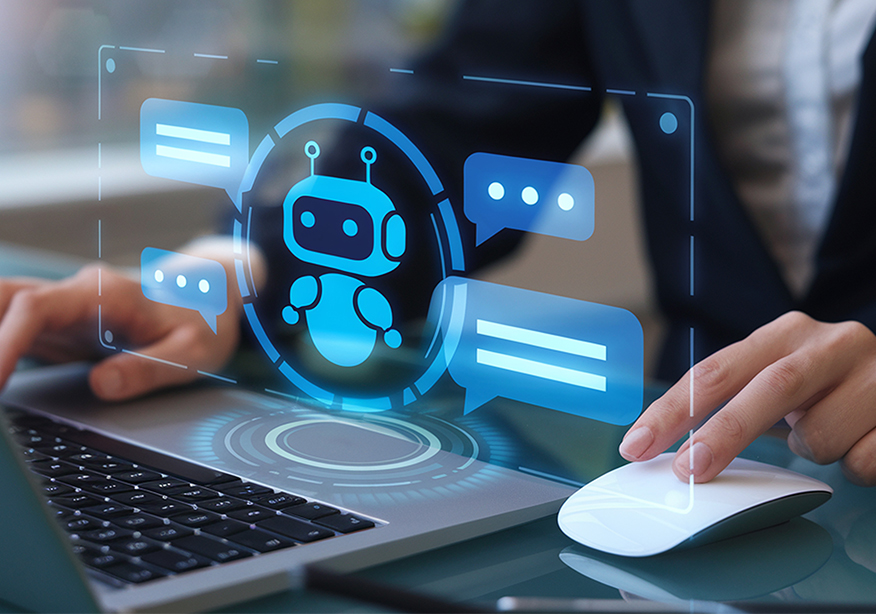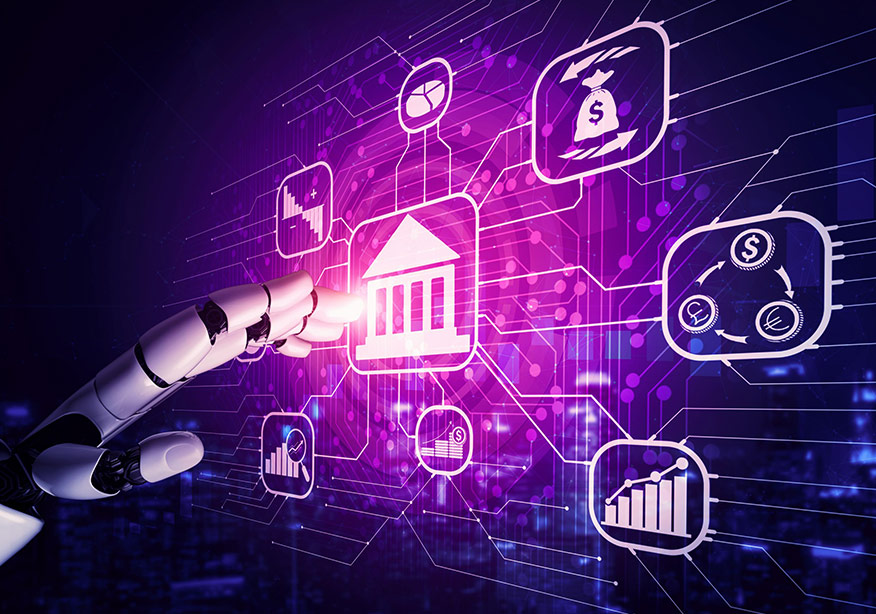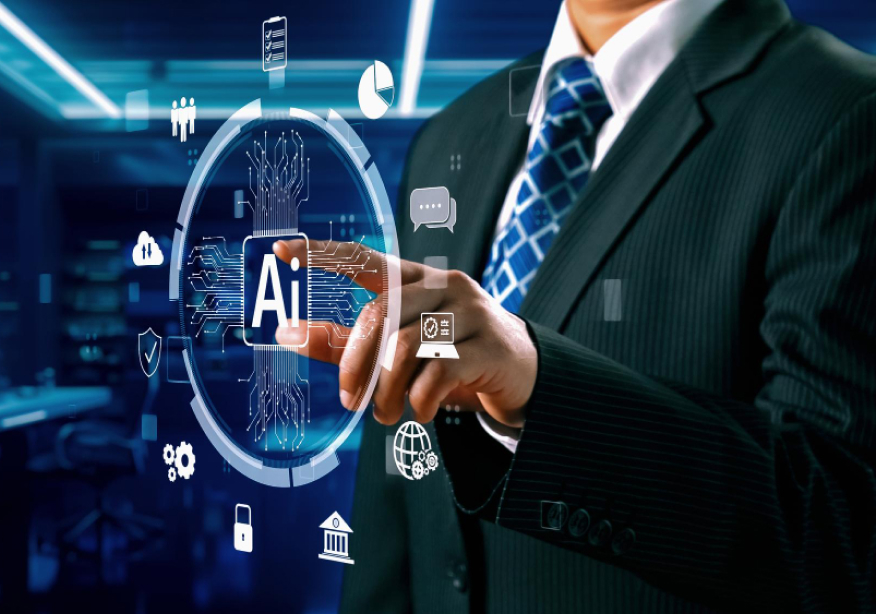AI
Everything You Need to Know About Microsoft’s Latest AI Assistant Launch
 Updated 06 Nov 2025
Updated 06 Nov 2025

Key Takeaways
- Microsoft debuts AI assistant updates with advanced collaboration tools, Google integration, and a personalized avatar named Mico.
- The latest Microsoft AI announcement focuses on enhancing productivity through memory-based personalization and group collaboration for up to 32 users.
- Microsoft Copilot AI now features deeper integration with Outlook, Edge, and Teams, empowering businesses to streamline workflows effortlessly.
- The new Microsoft AI features include reasoning across browser tabs, storylines for past searches, and improved responses for health-related queries.
- With Microsoft Copilot vs ChatGPT comparisons rising, Copilot emphasizes enterprise-grade data privacy and Microsoft 365 integration.
- Businesses can leverage Microsoft AI tools alongside PowerApps Development Solutions to build intelligent and customized enterprise applications.
In October 2025, Microsoft debuts AI assistant updates that redefine the boundaries of collaboration, personalization, and productivity. The tech giant’s latest Microsoft AI announcement introduces a new wave of Copilot features — from collaborative group workspaces and memory-based personalization to Google integration and a friendly animated avatar named “Mico.”
This rollout marks one of Microsoft’s most ambitious AI expansions yet. According to Statista, the global AI market is expected to surpass $400 billion by 2025, with intelligent assistants driving a major portion of this growth. Around 75% of enterprise teams now rely on AI-powered tools like Copilot to automate documentation, decision-making, and collaboration tasks. As AI assistants become more advanced, businesses are also exploring innovations like the best AI phone call agent with background noise cancellation, designed to ensure clearer and more natural conversations — a capability that aligns with Microsoft’s focus on real-time collaboration and smarter interactions.
With rivals like OpenAI, Anthropic, and Google rapidly advancing their models, Microsoft’s latest Microsoft AI assistant launch positions Copilot as a more powerful, intuitive, and emotionally engaging tool designed to fit seamlessly across business and personal workflows.
The Big Reveal: What Microsoft Announced
The Microsoft AI announcement revealed multiple Copilot enhancements that aim to deliver a more human, collaborative, and context-aware experience. Here are the key takeaways from the 2025 update:
1. Mico – The Animated Avatar
Microsoft introduced a lively animated character named Mico, short for Microsoft Copilot. This avatar reflects emotions, changes color, and interacts naturally with users, making conversations feel more human-like. It’s a clear move toward more personal, visual, and emotionally responsive AI interactions.
2. Collaboration Through Groups
Copilot’s new Groups feature turns it into a shared workspace where up to 32 people can collaborate simultaneously. Whether teams are drafting reports, managing projects, or brainstorming ideas, Copilot acts as a facilitator — summarizing discussions, tracking to-dos, and even generating action plans.
3. Integration with Google and Outlook
For the first time, Microsoft’s assistant integrates deeply with Google services alongside Outlook and other Office apps. This means users can manage documents, emails, and calendars across ecosystems — bridging Microsoft 365 and Google Workspace in a unified digital experience.
4. Memory and Personalization
Copilot now includes long-term memory, enabling it to remember users’ preferences, lists, and recurring ideas. This feature allows the assistant to recall context from past interactions — similar to how a human personal assistant would.
5. Improved Health Assistance
Microsoft has taken a major leap into healthcare by grounding Copilot’s health responses in verified medical sources. This step marks the beginning of Microsoft debuts AI health assistant capabilities, focusing on accuracy, safety, and credibility in health-related answers.
Enhance Your Workplace with AI Assistants
Partner with Q3 Technologies to integrate Microsoft Copilot and build intelligent, productivity-boosting AI systems.
Why the 2025 Launch Is a Game Changer
The Microsoft Copilot AI expansion goes beyond typical assistant features. It’s designed as an agentic companion — a proactive, reasoning-based AI capable of acting across multiple apps and retaining knowledge over time.
In an increasingly competitive AI landscape, Microsoft’s timing is crucial. Rivals like OpenAI’s ChatGPT, Anthropic’s Claude, and Google’s Gemini are racing to dominate the workspace and consumer assistant segments. But Microsoft’s advantage lies in its ecosystem.
By embedding Copilot directly into Edge, Word, Excel, Outlook, and SharePoint, Microsoft creates a unified experience across enterprise and personal productivity tools. For businesses already working with a SharePoint development company or looking to Hire SharePoint Developers, this means new opportunities to integrate AI-driven collaboration into existing workflows seamlessly.
Deep Dive into Microsoft’s New AI Features
Let’s explore the Microsoft AI features in more depth:
1. Mico – Giving AI a Human Touch
Mico isn’t just a visual gimmick; it’s Microsoft’s way of making AI approachable. The animated avatar provides real-time visual feedback — like smiling during greetings or changing color to show mood or processing states. It helps users feel more connected during long conversations or meetings, particularly when interacting via voice or video.
2. Groups – Redefining Team Collaboration
With Groups, Copilot transforms from an individual assistant into a collaborative teammate. Up to 32 users can participate in a shared workspace where Copilot summarizes discussions, compares documents, and tracks decisions. For companies that use Microsoft AI tools or develop business portals through a SharePoint development company, this feature opens new possibilities for team-driven automation.
3. Browser Reasoning and Storylines
When given permission, Copilot can now analyze open tabs in Microsoft Edge — summarizing content, comparing prices, and even taking actions like booking hotels. It also turns previous searches into “storylines,” allowing users to revisit older projects or ideas without losing context.
4. Health-Focused Updates
To combat misinformation, Microsoft improved how Copilot handles medical queries. The Microsoft debuts AI health assistant initiative ensures all health-related responses are sourced from credible partners. This marks Microsoft’s entry into a sensitive but critical domain — healthcare — where accuracy and trust are paramount.
5. Long-Term Memory and Personalization
With its long-term memory, Copilot remembers tasks, lists, and conversations. As Microsoft’s AI product manager Ella Steckler puts it, “It’s absolutely essential for a companion to have memory.” The assistant’s ability to retain and recall information transforms it from a reactive tool into a proactive digital companion.
Read Our Case Study: Digitizing Employee Workshops with SharePoint-Based Solutions For an Indian Multinational Conglomerate
Microsoft Copilot vs ChatGPT: What’s Different?
The debate around Microsoft Copilot vs ChatGPT continues as both evolve. While they share underlying technology through OpenAI’s models, their focus and ecosystems differ significantly.
| Feature | Microsoft Copilot AI | ChatGPT (OpenAI) |
|---|---|---|
| Integration | Deeply embedded in Microsoft 365, Edge, and Windows | Web-based, accessible via ChatGPT app or API |
| Memory | Persistent long-term memory with user consent | Memory feature still limited for general users |
| Collaboration | Supports group interactions with up to 32 users | Primarily individual conversations |
| Data Privacy | Enterprise-grade compliance via Microsoft Entra ID and Graph | Relies on OpenAI’s API policies |
| Health Focus | Verified medical sources under Microsoft’s AI health assistant program | General model responses without medical validation |
For enterprises using Microsoft’s ecosystem, Copilot offers tighter integration, compliance, and administrative control. ChatGPT remains a flexible, open environment for creative and cross-platform use cases.
How Businesses Benefit from the New AI Assistant
Microsoft’s updates are not just for personal use — they’re built to enhance enterprise productivity across departments.
1. Smarter Intranets with SharePoint
Companies leveraging SharePoint can integrate Copilot for intelligent content summarization, search optimization, and real-time insights. A SharePoint development company can customize these features to automate document workflows or enhance knowledge management systems.
2. PowerApps and Automation
With deeper AI integration, PowerApps Development Solution teams can build low-code business applications enhanced with Copilot. This lets non-technical employees automate forms, workflows, and customer interactions using natural language prompts.
3. Enterprise-Grade AI Development
Organizations pursuing an AI Development Solution can use Microsoft’s Azure OpenAI Service to build domain-specific assistants with enterprise data protection. This ensures privacy while enabling robust internal AI solutions that leverage Copilot’s new reasoning capabilities.
4. Hiring and Upskilling Developers
The 2025 AI wave is also reshaping the job market. Businesses aiming to embed Copilot features into SharePoint or Teams should Hire SharePoint Developers skilled in Microsoft Graph, Power Platform, and AI SDKs. These developers can customize Copilot experiences tailored to an organization’s internal data and needs.
AI in Healthcare: Microsoft’s Next Big Frontier
Through the Microsoft debuts AI health assistant initiative, the company aims to bring verified, source-grounded responses to health-related queries. Microsoft has already partnered with credible health organizations to ensure Copilot’s responses meet clinical accuracy standards.
For instance:
- Copilot can now summarize medical research articles.
- It can offer first-level patient education materials sourced from approved databases.
- It assists healthcare professionals with documentation and transcription tasks.
This push signals Microsoft’s commitment to ethical and responsible AI — focusing on data privacy, medical safety, and transparent source attribution.
The Technology Behind the Assistant
The new Copilot runs on Microsoft’s advanced Azure AI infrastructure, combining GPT-based reasoning with Microsoft Graph context. It leverages multimodal understanding — analyzing text, voice, and visuals simultaneously.
- Edge Reasoning: AI can interpret browser activity for smarter suggestions.
- Storylines: Auto-generated narratives from past research or browsing sessions.
- Memory Control: Users can delete, edit, or manage memory settings anytime.
- Localization: The assistant is now available across the US, UK, and Canada, with more countries rolling out soon.
These capabilities establish Microsoft’s AI as both versatile and secure — two key priorities for modern enterprises.
Accelerate Digital Transformation with Microsoft AI Tools
Leverage Q3 Technologies’ expertise in SharePoint, PowerApps, and enterprise AI development to modernize your workflows.
Why Businesses Should Pay Attention
For enterprises relying on digital transformation, this Microsoft AI assistant launch changes how employees collaborate, create, and make decisions.
- Enhanced Productivity: Teams can automate repetitive documentation, meetings, and reporting.
- Smarter Decision-Making: Copilot provides contextual insights and recommendations.
- Cross-App Integration: Seamless connection between Microsoft and Google apps increases flexibility.
- Scalable Automation: Through AI Development Solution frameworks, organizations can customize Copilot for industry-specific workflows.
Ultimately, Microsoft’s new assistant turns AI from a “tool” into a “teammate.”
What’s Next for Microsoft AI
Looking ahead, experts predict that Microsoft will continue expanding Copilot’s capabilities with:
- Multimodal integration (voice, image, and video inputs)
- Industry-specific agents for finance, education, and healthcare
- Wider rollout of Mico and memory features worldwide
- Stronger AI governance tools for enterprises
These innovations will further solidify Microsoft’s place as a global leader in enterprise-grade AI systems.
How Q3 Technologies Helps Businesses Build the Future of AI Assistance
Q3 Technologies stands at the forefront of intelligent automation and AI-driven transformation, helping enterprises harness the full potential of next-generation tools like Microsoft Copilot. With deep expertise in AI development, Microsoft solutions, and enterprise integration, Q3 Technologies empowers organizations to create smarter, more personalized digital experiences.
- Seamless Integration with Microsoft Ecosystems: Q3’s team of experts specializes in integrating AI assistants like Copilot across Microsoft 365, SharePoint, Teams, and Dynamics, ensuring unified workflows and improved productivity.
- Expertise in Generative & Conversational AI: From building custom AI chatbots to developing voice-based assistants comparable to the best AI phone call agent with background noise reduction, Q3 Technologies delivers solutions that enhance real-time communication and decision-making.
- End-to-End AI Solution Development: The company offers a full spectrum of AI services — from model fine-tuning and data pipeline setup to deployment and ongoing optimization — tailored to business goals.
- Focus on Personalization & User Experience: Just as Microsoft Copilot introduces memory-based personalization, Q3 Technologies helps enterprises design AI systems that remember context, learn from interactions, and adapt to users’ needs over time.
- Proven Track Record: With decades of experience serving global clients, Q3 Technologies combines innovation with reliability — ensuring every AI implementation delivers measurable business outcomes.
Q3 Technologies leverages generative AI and voice recognition models to design solutions similar to the best AI phone call agent with background noise management — ensuring human-like conversations that adapt to tone, intent, and environment.
The Bottom Line
The October 2025 update proves that Microsoft debuts AI assistant not as a minor upgrade but as a strategic leap toward a future of agentic, intelligent companions. With features like Mico, long-term memory, collaboration groups, and health-focused reasoning, Microsoft sets a new standard for what digital assistants can do.
For enterprises, it’s an exciting time to explore Copilot integration within SharePoint, Power Apps, or other enterprise platforms. Partnering with a trusted SharePoint development company or expert team to hire SharePoint Developers ensures smooth implementation and secure data practices.
In short, the Microsoft AI assistant launch is not just about smarter software — it’s about reimagining the human-AI partnership for the next decade of productivity, creativity, and innovation.
FAQs
What is Microsoft’s latest AI assistant launch?
The Microsoft AI assistant launch introduces upgraded Copilot AI features like collaboration, Google integration, memory, and an avatar called Mico.
How is Microsoft Copilot different from ChatGPT?
Microsoft Copilot vs ChatGPT: Copilot integrates with Microsoft 365 for productivity, while ChatGPT focuses on general conversational AI.
What are the new Microsoft AI features in 2025?
The Microsoft AI announcement adds reasoning over browser tabs, group collaboration, and personalized memory to enhance workflows.
What is Microsoft’s AI health assistant?
The Microsoft debuts AI health assistant ensures credible, accurate medical responses by grounding information in verified sources.
How can Q3 Technologies help businesses adopt Microsoft AI?
Q3 Technologies, a top SharePoint development company, integrates Microsoft AI tools, PowerApps Development Solutions, and enterprise AI systems.
Does Q3 Technologies offer AI voice call solutions?
Yes. Q3 builds the best AI phone call agent with background noise control using Copilot and ChatGPT-based AI Development Solutions.
Table of Content
- The Big Reveal – What Microsoft Announced
- Why the 2025 Launch Is a Game Changer
- Deep Dive into Microsoft’s New AI Features
- Microsoft Copilot vs ChatGPT: What’s Different?
- How Businesses Benefit from the New AI Assistant
- AI in Healthcare: Microsoft’s Next Big Frontier
- The Technology Behind the Assistant
- Why Businesses Should Pay Attention
- What’s Next for Microsoft AI
- How Q3 Technologies Helps Businesses Build the Future of AI Assistance
- FAQs



